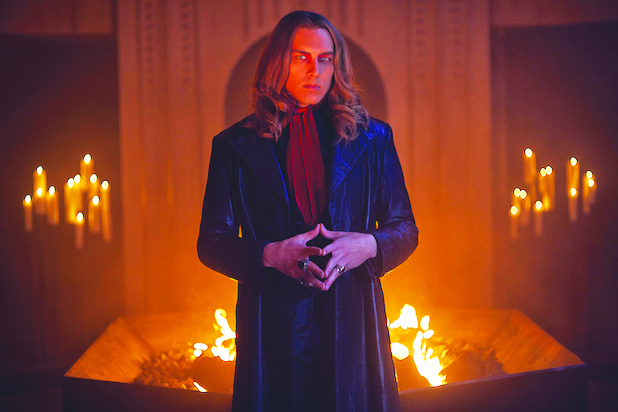“American Horror Story” wrapped up its eighth installment earlier this November. The season’s 10-episode run, originally billed as a crossover between the first (“Murder House”) and third (“Coven”) seasons, dealt with a hypothetical end of the world – a nuclear holocaust orchestrated by the antichrist, Michael Langdon, introduced in “Murder House.” The season begins with a demonstration of the moments leading up to this impending disaster, and then the first three episodes focus on a completely new set of characters who have taken underground to one of several bunkers (known as “outposts”) orchestrated by a mysterious global group in an attempt to weather the crisis.
As one watched these episodes in real time, they seemed cluttered and disjointed. There are frequent, large jumps forward in time. These sporadic leaps ultimately place the characters 18 months into the future, but naturally do not leave much room for character development or exposition. The season picks up at the end of episode three.
Three of the witches from “Coven” return; this triggers a flashback that resets the story to before the bombs and then spends the rest of the season detailing Langdon’s rise to power and the coven’s attempt to stop him. The story continues right up until the moment it had left off at earlier, setting the scene for a battle between the witches and the antichrist in episode 10.
Normally, “American Horror Story” season finale episodes leave the viewer with more questions than answers. Plots seem unresolved, and character motivations are sometimes confusing. Given the show’s nature as an anthology series, these tend to be permanent cliffhangers and questions. However, the finale to the eighth season, titled “Apocalypse Then,” bucks this trend and pulls off a feat the show hasn’t managed to do in at least the past two seasons – bringing the story full circle.
As the season progressed, there were some confusing elements. Some plots felt like they went on too long, and then were abandoned at the drop of a hat. In particular, the time and detail spent on developing a love story between two characters in the bunker (three episodes), who were ultimately killed off at the end of the third episode. This was frustrating to watch as the show was initially airing because it felt like a lot of time devoted to a plot line that seemingly went nowhere could have been spent on developing another, more relevant plot.
However, this choice was ultimately revealed to be important in the final episode. After Mallory, one of the new witches introduced this season, goes back in time to defeat Langdon and therefore avert the apocalyptic crisis, these two characters happen to meet and fall in love again. The very end of the episode shows the two of them dating, getting married, having a child and, to mirror the end of “Murder House,” returning home one day to find a babysitter dead at the hands of their son, who is clearly the next antichrist.
This choice on behalf of the show is an interesting one, because it creates a commentary on the nature of evil. Instead of there being one single antichrist in Langdon, it hints at a system where evil is cyclical, being reborn through these boys and unable to be permanently kept at bay. It’s both a callback for fans and paints the ideals with which the season was attempting to wrestle. While attempts may have seemed to fall flat as the season progressed, the payoff at the end was really worth it. This cyclical battle of good versus evil that the episode sets up is a fresh perspective for the show and much more compelling than one all-encompassing antihero.
This episode does raise a few questions, however. After the apocalypse has been undone, Mallory decides to save another witch, Queenie, from traveling to Los Angeles to meet her death, which was instrumental in the plot of the fifth season. Given that all the seasons of “American Horror Story” are connected, this means that there is a plot point in another season that has now been undone. Overall, the season finale of “Apocalypse” neatly ties together the events of the eighth installment of “American Horror Story” and reveals the overarching story structure that viewers had been unable to see being constructed for them.







